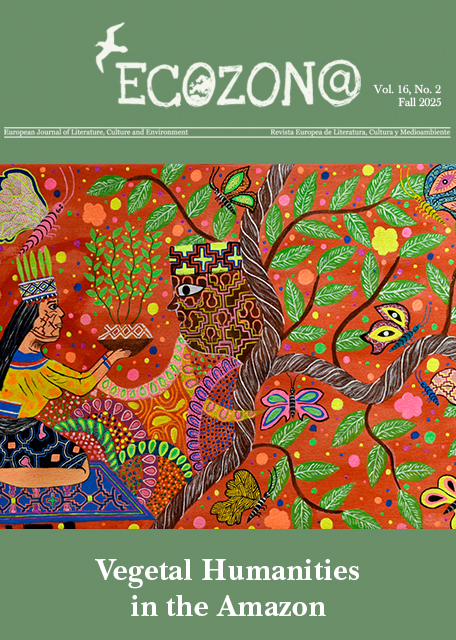<b>Moniya amena: El origen del río Amazonas</b> // Moniya amena: The Origin of the Amazon River
DOI:
https://doi.org/10.37536/ECOZONA.2017.8.1.1375Abstract
Resumen
Narrativas orales sobre un árbol gigantesco de la abundancia son comunes en las cosmovisiones indígenas por casi toda la cuenca amazónica. La historia revela que las transformaciones vida, muerte y el renacer garantizan la circulación de la energía vital capaz de adoptar todas las formas del paisaje. En la versión anterior, además de asociar al árbol con el origen del río, la preocupación ecológica de los pobladores parece coincidir con el llamado urgente en nuestra época a la creación una nueva imaginación ambiental que borre las dicotomías entre lo humano y no humano.
Abstract
Oral narratives about a gigantic tree of abundance are common in the many indigenous cosmovisions throughout almost the entire Amazonian basin. The story reveals that transformations of life, death, and re-birth guarantee the circulation of vital energy capable of adopting all forms of the landscape. In this tale, in addition to associating the tree with the origin of the river, the ecological concern of the inhabitants seems to coincide with the urgent outcry of our era toward the creation of a new environmental imagination that erases the dichotomies between human and non-human life.
Downloads
##submission.downloads##
Pubblicato
Fascicolo
Sezione
Licenza
Authors who publish with this journal agree to the following terms:
a) Authors retain copyright and grant the journal right of first publication with the work simultaneously licensed under a Creative Commons Attribution License that allows others to share the work with an acknowledgement of the work's authorship and initial publication in this journal (CC BY-NC for articles and CC BY-NC-ND for creative work, unless author requests otherwise.
b) Authors are able to enter into separate, additional contractual arrangements for the non-exclusive distribution of the journal's published version of the work (e.g., post it to an institutional repository or publish it in a book), with an acknowledgement of its initial publication in this journal.
c) Authors are permitted and encouraged to post their work online (e.g., in institutional repositories or on their website) prior to and during the submission process, as it can lead to productive exchanges, as well as earlier and greater citation of published work (See The Effect of Open Access).










